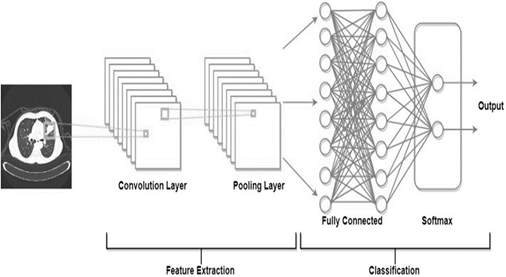An Innovative Method for Lung Cancer Identification Using Machine Learning Algorithms
Main Article Content
Abstract
Biological community and the healthcare sector have greatly benefited from technological advancements in biomedical imaging. These advantages include early cancer identification and categorization, prognostication of patients' clinical outcomes following cancer surgery, and prognostication of survival for various cancer types. Medical professionals must spend a lot of time and effort gathering, analyzing, and evaluating enormous amounts of wellness data, such as scan results. Although radiologists spend a lot of time carefully reviewing several scans, tiny nodule diagnosis is incredibly prone to inaccuracy. Low dose computed tomography (LDCT) scans are used to categorize benign (Noncancerous) and malignant (Cancerous) nodules in order to study the issue of lung cancer (LC) diagnosis. Machine learning (ML), Deep learning (DL), and Artificial intelligence (AI) applications aid in the rapid identification of a number of infectious and malignant diseases, including lung cancer, using cutting-edge convolutional neural network (CNN) and Deep CNN architectures, we propose three unique detection models in this study: SEQUENTIAL 1 (Model-1), SEQUENTIAL 2 (Model-2), and transfer learning model Visual Geometry Group, VGG 16 (Model-3). The best accuracy model and methodology that are proposedas an effective and non-invasive diagnostic tool, outperforms other models trained with similar labels using lung CT scans to identify malignant nodules. Using a standard LIDC-IDRI data set that is freely available, the deep learning models are verified. The results of the experiment show a decrease in false positives while an increase in accuracy.

